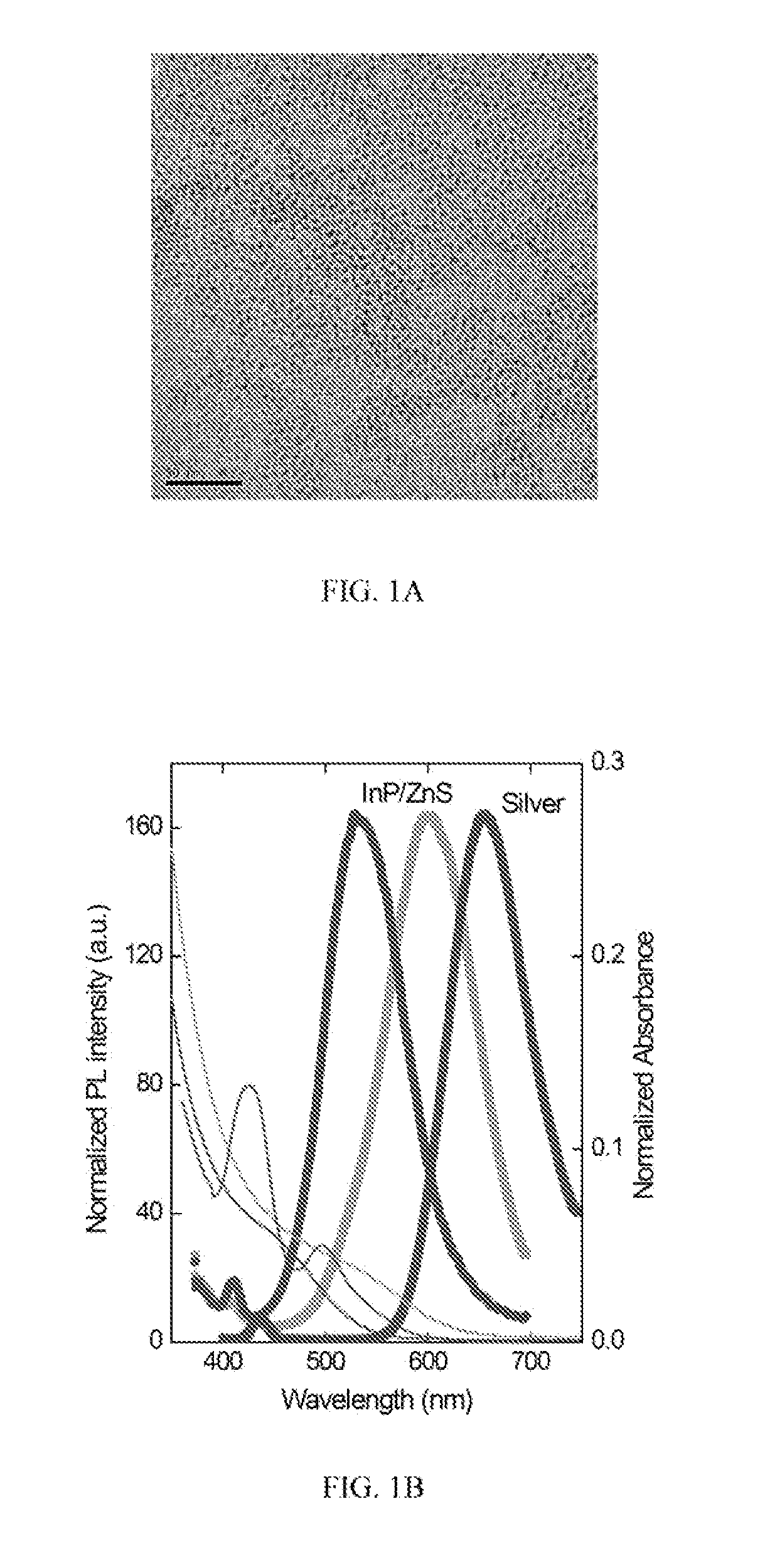Nano-sensors for oil and gas reservoir characterization
a technology of oil and gas reservoirs and nanosensors, which is applied in the direction of instruments, fluid removal, borehole/well accessories, etc., can solve the problems of limiting the stability of fluorescent materials for reservoir imaging, the use of oil reserves, and the rapid depletion of world's easily accessible oil reserves, so as to achieve significant freedom of surface chemistry and stability
- Summary
- Abstract
- Description
- Claims
- Application Information
AI Technical Summary
Benefits of technology
Problems solved by technology
Method used
Image
Examples
Embodiment Construction
[0028]Referring to FIG. 9, in embodiments of the present invention, QDs and noble metal clusters are implemented as a nano-sensor with specific functionality customized for reservoir management in a water flooding process. Embodiments of the present invention develop a nano-sensor composition based on InP / ZnS core shell QDs and atomic silver clusters. As these materials lay within the size range of 1-20 nm, there is no size limitation with respect to the pore size of the reservoir formation.12 Due to the differences in surface chemistry of the nanomaterials, they experience different reactions depending on the specific local conditions. The nano-sensors may be injected into a formation at an injection well, including accompanying a water flooding process. After recovery of the nano-sensors from the production well, they are analyzed and the chemical and optical properties are compared to the initial situation before injection. The differences between both measurements provide a uniq...
PUM
 Login to View More
Login to View More Abstract
Description
Claims
Application Information
 Login to View More
Login to View More - R&D
- Intellectual Property
- Life Sciences
- Materials
- Tech Scout
- Unparalleled Data Quality
- Higher Quality Content
- 60% Fewer Hallucinations
Browse by: Latest US Patents, China's latest patents, Technical Efficacy Thesaurus, Application Domain, Technology Topic, Popular Technical Reports.
© 2025 PatSnap. All rights reserved.Legal|Privacy policy|Modern Slavery Act Transparency Statement|Sitemap|About US| Contact US: help@patsnap.com



